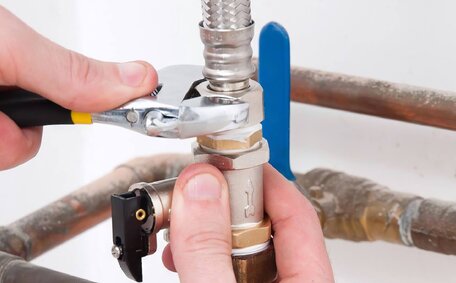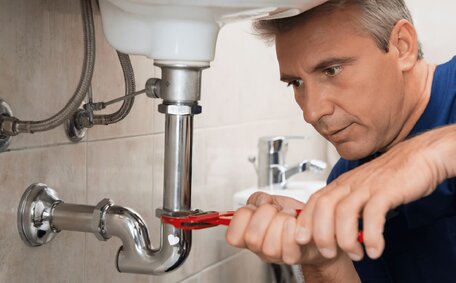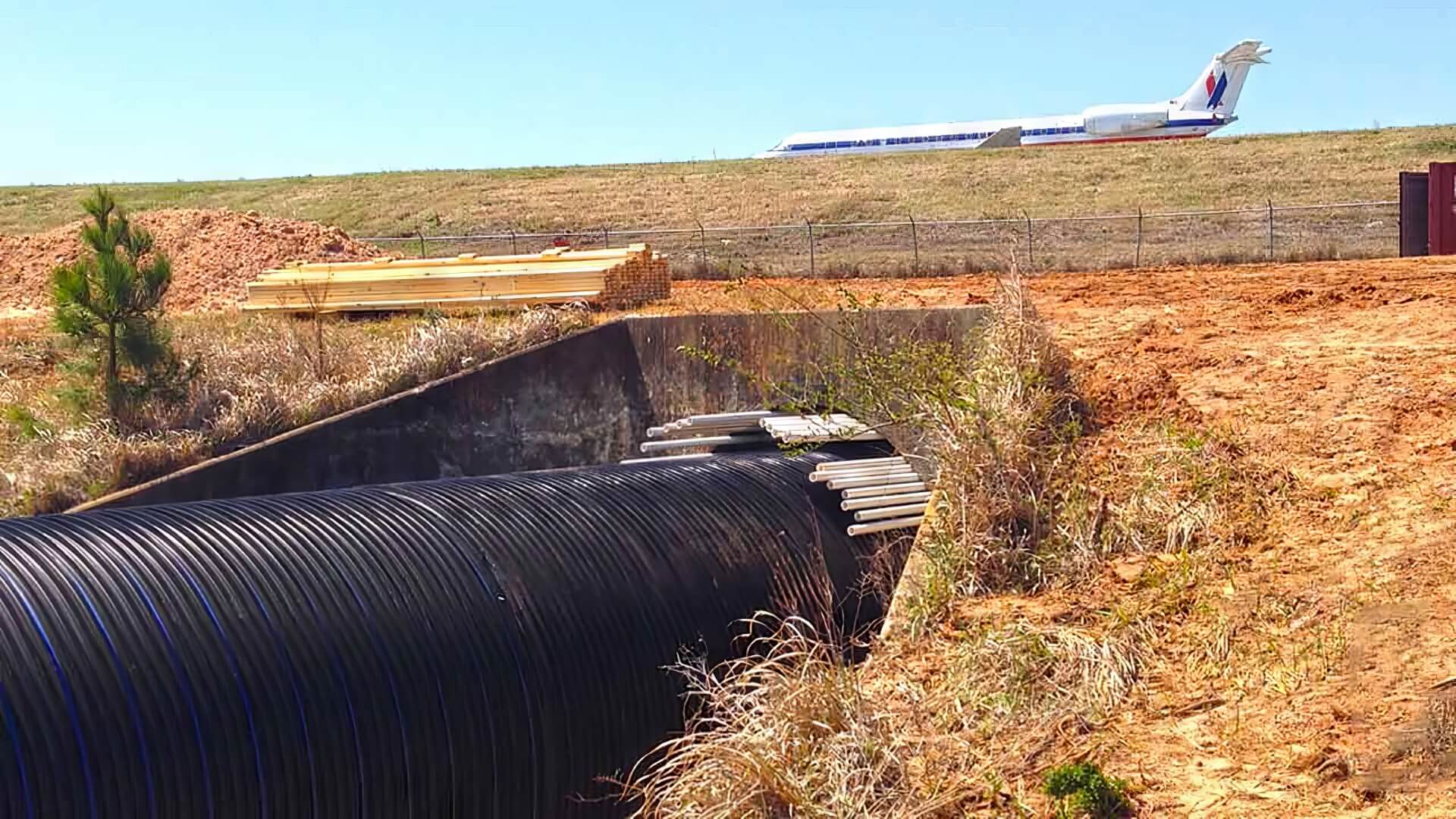
Is a broken tap an emergency?
A broken tap that is causing flooding, water wastage or damage should be treated as a plumbing emergency. Call our 24/7 emergency plumbers for prompt repairs to burst pipes, damaged taps, water leaks and more.
Read MoreA consistent hot water supply is crucial in any household, and it’s the pilot light in your gas water heater that’s the key. Should it go out, so does your access to hot water.
Relighting the light pilot is usually a simple process that most homeowners can perform themselves. At North Ryde Plumbing, we have over 10 years of expertise helping homeowners get their hot water back up and running. In this guide, we’ll walk you step-by-step through relighting your gas water heater’s pilot light.
We will guide you through safety precautions and troubleshooting techniques to resolve common issues that may prevent the pilot light from staying lit. If problems persist, we also provide recommendations on when it’s best to call a professional plumber.
This guide aims to equip you with the knowledge to confidently relight your gas water heater’s pilot light and ensure your water is hot whenever needed.
If you detect even a faint smell of gas coming from the water heater before or during the relighting process, immediately turn off the gas at the appliance service valve and open doors and windows to ventilate the area of any residual gas.
Remove nearby open flames or ignition sources and refrain from using electrical devices or lights, as they can ignite gas fumes.
Ensure thorough room ventilation for 5-10 minutes to dispel gas fumes before relighting the pilot. Always refer to the manufacturer’s instructions as well for any additional safety precautions specific to your model.
Before attempting to relight the pilot light, you need to turn off the gas supply to prevent any gas from flowing to the water heater. This important safety step prevents gas buildup which could ignite.
Locate the gas shutoff valve adjacent to the water heater and turn it 90 degrees clockwise to the off position. The valve is usually found near the external access panel, which secures your water system.
If you have difficulty accessing or turning off the gas shutoff valve, do not proceed any further. Instead, call North Ryde Plumbing on 1300 349 338 and one of our licenced technicians can come out to safely turn off the gas supply so you can relight the pilot.
Ensure adequate ventilation around the water heater after turning off the gas supply and before relighting the pilot. This helps remove any residual gas that may have accumulated in case of a leak.
Open doors and windows widely to circulate fresh air and eliminate any gas. If possible, use exhaust fans and direct an additional fan towards an open window to help clear the gas buildup.
Allow fresh air to flow for at least 5-10 minutes before relighting. If you detect any gas smell, do not relight the pilot until the gas has fully dissipated. Refer to your owner’s manual for the recommended ventilation time.
A well-ventilated area minimises the risk of gas-related hazards, ensuring a safe environment for relighting the pilot light once all ignition sources are off.
You’ll find the process of relighting your gas water heater’s pilot light to be straightforward, especially when you have the following few essential tools:
It’s also prudent to keep your gas meter key close by to promptly shut off the main gas supply if needed. Avoid using matches, lighters with short nozzles, or anything that requires placing your hands inside with an open flame.
Start by locating the removable access panel, usually on the lower third of the water heater.
Use a screwdriver to unfasten the panel by loosening any screws or clasps. Remove the panel completely and set it aside. Inspect the area with a flashlight to rule out any gas odours or leaks.
Locate the pilot light assembly, identified by a small nozzle and igniter button. The nozzle will have tubing that leads to the gas control valve. Trace the pilot tubing to confirm you have the correct assembly.
Having located the pilot assembly, you have safe access to proceed with relighting the pilot flame.
Most gas water heaters have a manual ignition system for the pilot light. To relight it:
Take all necessary safety precautions and refer to your owner’s manual for model-specific guidance.
If you experience continued difficulty keeping the pilot lit or have concerns about a potential gas leak, contact our team at North Ryde Plumbing on 1300 349 338.
Many modern gas water heaters utilise electronic ignition, making it easier for you to relight your pilot by following these steps:
An indicator light on some models will confirm when the pilot is lit. For comprehensive guidance on electronic ignition, do refer to your water heater’s owner’s manual. Contact our licenced technicians at North Ryde Plumbing on 1300 349 338 if issues relighting the pilot persist.
Once the pilot light is relit, it’s crucial to check that it’s burning correctly before considering the job done.
Check that the pilot flame is stable and emits a strong blue colour, reaching a height of about 8-10 centimeters. An incorrectly sized flame that is small or mostly yellow indicates a problem with gas flow or oxygen supply to the pilot light.
The thermocouple sensor should sit within the pilot flame. The tip turning bright red verifies it is detecting heat from the flame to hold the safety gas valve open.
After waiting a few minutes, test the system by turning on a hot water faucet. A functional pilot light will prompt the main burner to ignite and dispense hot water normally. No hot water indicates an issue preventing the pilot from properly maintaining your water temperature.
Carefully reinstall any access panels after testing and visual inspection. If the flame appears abnormal, the thermocouple doesn’t heat, or hot water supply is disrupted, contact our technicians at North Ryde Plumbing on 1300 349 338 to troubleshoot further.
Several common issues can prevent your gas water heater’s pilot light from staying lit after you attempt to relight it:
The thermocouple, located close to the pilot light, creates a minor electrical current when the pilot flame heats it, keeping the gas valve open to maintain the gas supply.
Should the thermocouple falter, fail to heat up sufficiently, or if its connections are compromised, the gas valve will close, extinguishing the pilot light.
A damaged or clogged pilot tubing restricts gas flow, resulting in an undersized pilot flame that cannot properly heat the thermocouple. Low gas line pressure entering the water heater prevents normal flame size.
A partially blocked flue prevents exhaust gases escaping normally up the flue. This backpressure extinguishes the pilot flame.
Lack of fresh air around the water heater can extinguish the pilot flame due to insufficient oxygen. Air intake vents or flues covered over or blocked stops oxygen reaching the flame.
Our experienced, licenced technicians at North Ryde Plumbing are fully equipped to troubleshoot any issues preventing your pilot light from functioning properly. Call us on 1300 349 338 and we can inspect your complete system and get your hot water flowing dependably again.
While relighting your gas water heater’s pilot light is often a straightforward DIY task, there are times when enlisting a professional plumber is the best course of action to ensure your hot water is restored.
Contact North Ryde Plumbing on 1300 349 338 or [email protected] if:
Our experienced, licenced technicians have specialised equipment to diagnose issues, repair or replace faulty components, and get your hot water flowing reliably. We conduct comprehensive inspections for leaks, ventilation issues, and overall system functionality.
For after-hours emergency plumbing assistance, North Ryde Plumbing is here when you need us. Rely on our expertise to swiftly and securely restore your pilot light and hot water service.
A broken tap that is causing flooding, water wastage or damage should be treated as a plumbing emergency. Call our 24/7 emergency plumbers for prompt repairs to burst pipes, damaged taps, water leaks and more.
Read MoreBurst pipes, blocked toilets, sewer backups and lack of hot water are among the most common residential plumbing emergencies that require urgent attention from a professional plumber. If you experience any of these issues, call our 24/7 North Ryde emergency plumbers right away for fast, reliable service.
Read MoreTo determine if a relined pipe meets safety standards, professionals use equipment like CCTV cameras and hydrostatic pressure tests. Relining pipes is an affordable, non-invasive alternative to full replacement that can extend pipe lifespan 50+ years if done properly.
Read MoreNorth Ryde, 2113 NSW
We will call back as soon as possible.




